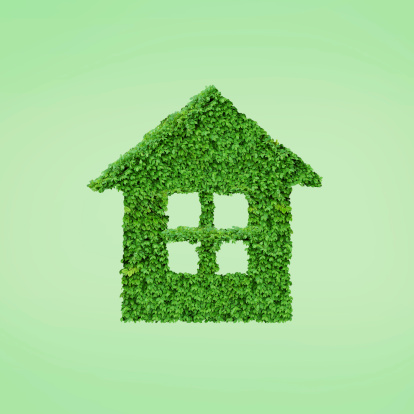How Green Is Your Building?
The prize for increasing your building’s efficiency could be vast, say energy-saving experts.

Whether it’s a new build or an existing structure, there are many ways to make your home or work space less inefficient.
Historically, there haven’t been financial incentives in the GCC to reduced energy costs, especially when compared to the likes of Europe. But more buildings in the Gulf are switching to greener practices.
Perhaps the most popular certification is the Leadership in Energy and Environmental Design (LEED) green building rating system. The US-based award judges the energy efficiency and sustainability of the materials used and various aspects of a building and its surroundings.
Obtaining LEED certification requires compliance with a minimum number of criteria affecting many aspects of a project, from site selection to the recycled content of building materials.
Projects earn points for criteria that they fulfill; those that earn more points are awarded a higher level of certification.
Jason Perks, senior director for project and solutions at Osram Middle East, the lighting unit in the European engineering firm Siemens, said buildings which are LEED certified cost more but are easier to market and sell. “It gives you a greener image and guarantees a worldwide standard. LEED will definitely grow in the next few years as it’s the only globally accepted certification.
“In general, the additional construction cost is roughly 10 per cent to 15 per cent. The worth is judged depending on the payback time accepted from the customer. This is normally around four to five years for indoor, and some years longer for outdoor,” Perks added.
To pull off an energy-efficient upgrade, buildings will often hire specialist consultants or ‘performance contracting companies’. They will advise that boosting your green credentials can take various forms. Many think lighting is the most important, especially in the region.
Mark Sutton Vane, director at Sutton Vane Associates Lighting Design based in London, said there are a range of very simple measures that when implemented can dramatically reduce costs. “Check all your lighting and if you can use 50 watts bulbs instead of 100 watts, then do it. Do you manage your building’s lighting in a smart way? For instance, are your staff switching lights off after leaving a room? Are cleaners using just lights for the rooms they’re cleaning rather than the whole floor?
“New lamps that are energy saving are not always as good as the manufacturers claim, particularly on how long they will last and how much they will save you. Check who made the LED chip in the head of the fitting. If it fails after just a year then it’s a false economy.”
So how much will it cost to switch your bulbs?
Vane said: “Typically, energy efficient bulbs cost six times more than regular tungsten bulbs. But, where normal lights last for 1,000 hours, energy saving ones last for 50,000 hours. It means you’re changing them less, plus avoiding the embarrassment of blown bulbs. This is particularly important for the fronts of hotels in the GCC.”
Vane is a lighting architect who designs schemes for buildings to increase sustainability. He is currently lighting the National Museum in Oman and the Olympic Park for London 2012.
Solar energy companies have thrived in the GCC as more and more developers turn to the sun to save them cash.
One of them, Suntech Power Holdings is primarily involved in the design, development, manufacturing and marketing of photovoltaic (PV) products in the region, but provides engineering and construction services for residential and commercial customers.
Ron Shen, president of Asia Pacific, Middle East and Africa at Suntech, said: “The UAE is leading the way in green building. Abu Dhabi was recently picked as the headquarters for the International Renewable Energy Agency and Dubai houses the Middle East Centre for Sustainable Development.
“The Shams Tower is a brilliant example of efforts made by local developers to be at the forefront of renewable energy and design. Suntech’s Building Integrated Photovoltaics (BIPV) adds an impressive aesthetic to any building and Shams’ multi-purpose system illustrates just how innovative solar energy can be applied.
“This BIPV system provides shading for the car park while producing 450 mega watt hours of clean energy annually, saving 400 tons of greenhouse gas. As the PV system is actually building integrated, it replaces the façade, saving building cost and materials.”
Counting the cost of savings, whether it’s from building materials or improvements to lighting and design, is likely to take years rather than months. However, given the buffer of cheaper energy costs presently, buildings in the GCC have the potential to dramatically upgrade their facilities and practices while they can. It is often a daunting task, but installing some simple tests is a good place to start.
